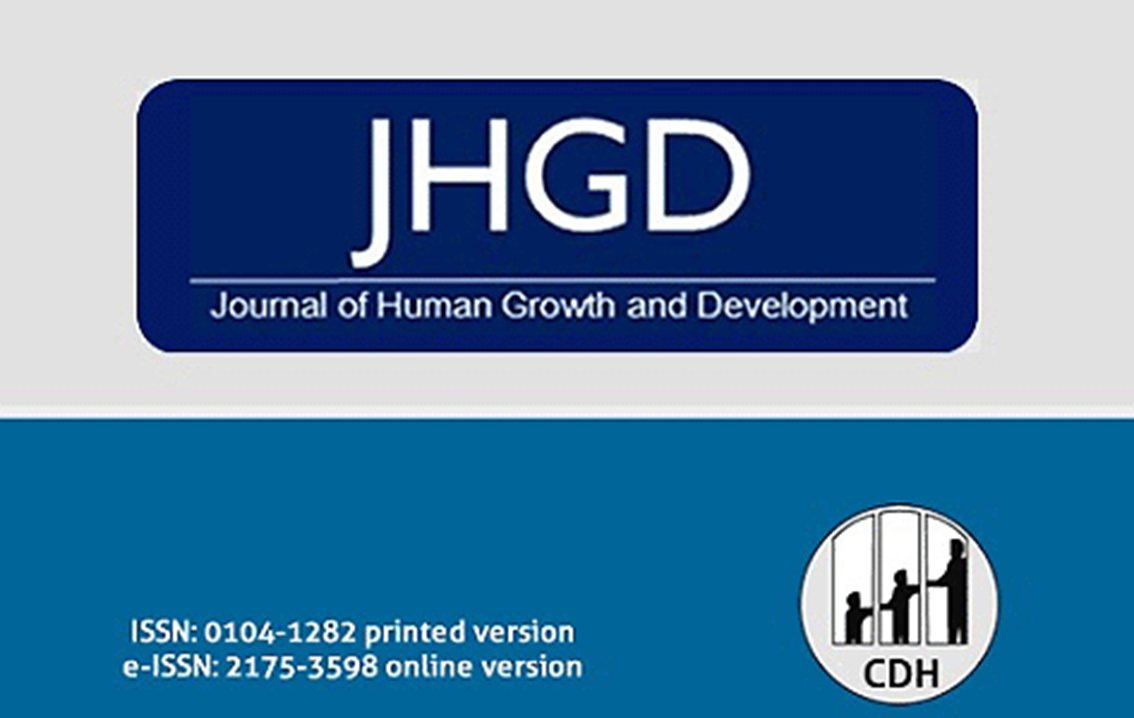Percepção materna do estado nutricional do filho sob a óptica da análise dos resíduos ajustados
DOI:
https://doi.org/10.7322/jhgd.v30.11102Palavras-chave:
comportamento materno, estado nutricional, criança, sobrepeso, obesidadeResumo
Introdução: A percepção materna do estado nutricional de seus filhos apresenta diversos fatores sociais importantes em sua composição e ela pode ser um importante na determinação da qualidade de alimentação das crianças.
Objetivo: Avaliar os fatores sociais que influenciam a percepção materna sobre o estado nutricional de seus filhos.
Método: Estudo transversal com escolares de 6 a 10 anos de uma escola pública de São Paulo, Brasil. Os dados foram obtidos por meio de um questionário estruturado aplicado às mães e a partir de antropometria das crianças. As associações entre as variáveis foram analisadas pelo teste do Quiquadrado e pela análise dos resíduos ajustados, com 5% de significância. A concordância entre a percepção materna e o estado nutricional foi avaliada por meio do teste Kappa.
Resultados: Encontramos percepção incorreta em 45,8% dos casos, dos quais 98,2% foram de subestimação, com 80% de subestimação para crianças com sobrepeso. Encontramos concordância pobre e leve para todos os casos. Os resíduos ajustados apontaram para subestimação eutrófica; melhor
percepção materna para o obeso; melhor percepção para mães que atingiram o ensino fundamental e médio; subestimação para meninos eutróficos e percepção correta para meninas eutróficas. As mães solteiras e as que não trabalham fora tendem a subestimar seus filhos eutróficos.
Conclusão: Encontramos baixa concordância para quase todos os casos, com exceção das mães de meninas e das que não trabalham fora. A percepção correta relacionou-se positivamente com a menor escolaridade, sendo pior para as mães sem companheiro e que não trabalham fora. As mães de
meninas, em comparação com as mães de meninos, tiveram uma percepção mais precisa.
Referências
Rivera, J., de Cossío, T., Pedraza, L., Aburto, T., Sánchez, T. and Martorell, R. Childhood and adolescent overweight and obesity in Latin America: a systematic review. Lancet Diabetes Endocrinol. 2014; 2(4):321-332. DOI: https://doi.org/10.1016/s2213-8587(13)70173-6
Costa L, Rubio KL, Lopes SMA, Tanouye ATA, Bertolini SMMG, Branco BHM. Effects of 12 weeks of interdisciplinary interventions on behavioral and eating parameters of adolescents with overweight or obesity. J Hum Growth Dev. 2019; 29(2): 177-186. DOI: http://doi.org/10.7322/jhgd.v29.9417
Juarez Mendez V. Características maternas e infantiles asociadas a obesidad en lactantes menores de un año de edad del norte de méxico. Nutr Hosp. 2019; 7; 36(1): 244. DOI: http://dx.doi.org/10.20960/nh.2388
Francescatto C, Santos NS, Coutinho VF, Costa RF. Mothers’ perceptions about the nutritional status of their overweight children: a systematic review. J Pediatr (Rio J). 2014; 90(4): 332-43. DOI: https://doi.org/10.1016/j.jped.2014.01.009
Bhadoria A, Sahoo K, Sahoo B, Choudhury A, Sufi N, Kumar R. Childhood obesity: Causes and consequences. J Family Med Prim Care. 2015; 4(2): 187-92.
DOI: https://doi.org/10.4103/2249-4863.154628
Keller K, Olsen A, Kuilema L, Meyermann K, Belle C. Predictors of parental perceptions and concerns about child weight. Appetite. 2013; 62: 96-102. DOI: https://doi.org/10.1016/j.appet.2012.11.016
Baughcum A, Chamberlin L, Deeks C, Powers S, Whitaker R. Maternal Perceptions of Overweight Preschool Children. Pediatrics. 2000; 106(6): 1380-6. DOI: https://doi.org/10.1542/peds.106.6.1380
Medeiros AJ, Palmeira PA, Lima JS, Cardoso VVBP. Longitudinal monitoring of nutritional status of schoolchildren at a public school. J Hum Growth Dev. 2020; 30(2): 209-215. DOI: https://doi.org/10.7322/jhgd.v30.10367
Novaes J, Lamounier J, Franceschini S, Priore S. Fatores ambientais associados ao sobrepeso infantil. Rev. Nutr. 2009;22(5):661-673. DOI: https://doi.org/10.1590/s1415-52732009000500007
Downloads
Publicado
Edição
Seção
Licença
Copyright (c) 2020 Gustavo Carreiro Pinasco

Este trabalho está licenciado sob uma licença Creative Commons Attribution 4.0 International License.







